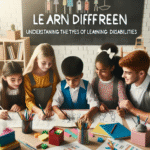
Introduction
In today’s rapidly evolving world, emotional intelligence and social skills have become indispensable tools for success—both personally and professionally. As we continue to navigate a landscape filled with complexities, the role of parents in promoting social emotional learning (SEL) at home is more crucial than ever. SEL involves teaching children how to understand and manage their emotions, set goals, show empathy, and maintain positive relationships. This comprehensive guide will illuminate the vital part parents play in nurturing these skills, providing actionable insights, real-world case studies, and strategies to enrich the emotional and social development of your children.
Understanding Social Emotional Learning (SEL)
What is Social Emotional Learning?
At its core, social emotional learning is the process through which individuals, particularly children, develop the ability to recognize and manage emotions, establish positive relationships, and make responsible decisions. According to the Collaborative for Academic, Social, and Emotional Learning (CASEL), SEL encompasses five key competencies:
- Self-awareness: Recognizing one’s emotions and their impact.
- Self-management: Regulating emotions and behaviors.
- Social awareness: Understanding social norms and recognizing the perspectives of others.
- Relationship skills: Building and maintaining healthy relationships.
- Responsible decision-making: Making choices based on ethical standards and respect for self and others.
The Importance of SEL
Research indicates that cultivating social emotional skills can lead to numerous benefits. Children equipped with effective SEL skills are generally better equipped for academic success, demonstrate improved mental health, and build stronger relationships with peers and family. As parents, understanding these competencies and their impacts is the first step in fostering a supportive home environment conducive to SEL development.
The Role of Parents in Promoting Social Emotional Learning at Home
Creating a Supportive Environment
The journey begins at home. Parents can create an environment that nurtures SEL principles by encouraging open communication, active listening, and unconditional support. Here’s how:
Modeling Behavior: Children often learn by observing their parents. Demonstrating healthy emotional regulation and social interactions sets a living example for them.
- Encouraging Conversations: Regularly talk about emotions—ask your child how they feel and encourage them to express themselves freely. This can be as simple as discussing feelings at the dinner table or after school.
Case Study: The Johnson Family
The Johnsons, a family of four, found it crucial to address emotional topics. They initiated "Feelings Fridays," a weekly tradition where each member shares their highs and lows of the week. This practice not only opened channels of communication but also taught their children the value of validation and empathy.
Analysis
The Johnson family serves as an excellent example of how regular communication about emotions can foster a home environment rich in emotional intelligence. Their approach provides children with the language to articulate feelings, reducing emotional bottling and teaching them to empathize with others.
Teaching Emotional Vocabulary
Understanding and naming emotions is a key step in social emotional learning. Parents can integrate emotional vocabulary into daily activities:
Storytelling: Use books and movies to discuss characters’ emotions and decisions. This promotes engagement and allows children to explore emotional complexities in a safe context.
- Emotion Charts: Create a visual resource where children can point to how they feel. This can be hung in their room or a common area in the house, reminding them of the myriad of emotions that exist.
Case Study: The Patel Family
The Patel family took a creative approach by creating an "Emotion Wheel." They encouraged their children to use it daily to express how they were feeling. As a result, their kids became more adept at recognizing and articulating their emotions, leading to improved interactions with peers.
Analysis
The Patel family’s innovative use of an Emotion Wheel highlights how visual tools can help children articulate complex feelings. This proactive strategy not only builds emotional awareness but also fosters dialogue within the family, reinforcing the significance of discussing emotions.
Encouraging Empathy
Empathy is a cornerstone of social emotional learning. Parents can foster empathy through:
Volunteer Activities: Engage in community service as a family. This helps children connect with diverse perspectives and cultures, reinforcing the understanding that everyone has their own story.
- Discussing Real-Life Scenarios: Encouraging discussions around social issues or current events can stimulate empathy by promoting understanding of others’ feelings and situations.
Case Study: The Smith Family
The Smiths decided to volunteer at a local animal shelter. By experiencing the needs of animals and discussing these experiences together, their children actively engaged in conversations about empathy, recognizing the importance of caring for others—both humans and animals.
Analysis
The Smith family’s experience exemplifies how community involvement can teach empathy and selflessness. By actively participating in helping others, children learn that their actions can have a meaningful impact on the lives of others, reinforcing the principles of social emotional learning.
Linking SEL to Academic Success
The Holistic Connection
Parents might wonder how social emotional learning correlates with academic performance. Studies have shown a significant link between strong SEL competencies and improved academic outcomes. When children feel emotionally secure, they are more likely to engage and participate in their education.
Practical Strategies
Setting Goals: Encourage children to set personal and academic goals. This enhances self-management skills and teaches accountability.
- Calming Strategies: Teach children calming techniques such as deep breathing or mindfulness. These can help reduce anxiety and improve focus on learning.
Case Study: The Garcia Family
The Garcias implemented a "Goal-Setting Sunday," where each child outlined their academic goals for the week and shared ways to achieve them. Not only did this improve their academic focus, but it also strengthened their self-management skills.
Analysis
The Garcia family’s dedicated time for goal-setting provides an excellent example of how structured practices can lead to enhanced self-regulation and academic success. By encouraging responsibility, parents can form a solid foundation for emotional and academic growth.
Navigating Challenges
Common Challenges Parents Face
- Time Constraints: Many parents juggle work, home responsibilities, and personal time, making it difficult to focus on SEL.
- Cultural Differences: Cultural backgrounds can influence how emotions are expressed and perceived.
- Resistance from Children: Children may resist discussing feelings or expressing emotions due to societal expectations.
Strategies to Overcome Challenges
Integrate SEL into Daily Life: Look for natural opportunities to discuss emotions, making it less of a chore and more an organic part of life.
Cultural Sensitivity: Educate yourself about effective communication styles from diverse cultures, tailoring discussions around emotions accordingly.
- Normalize Emotional Conversations: Reassure children that discussing feelings is commonplace and that it’s okay to seek support from family.
The Long-Term Benefits of SEL
Preparing for the Future
The role of parents in promoting social emotional learning at home extends beyond childhood. Kids who develop strong SEL skills are generally more resilient, adaptable, and capable of navigating the complexities of adulthood.
Life Skills Acquired through SEL
Conflict Resolution: Armed with good emotional understanding, children gain tools to resolve disputes with peers amicably.
Resilience: They learn how to cope with setbacks, promoting perseverance in the face of adversity.
- Effective Communication: SEL fosters skills necessary to communicate thoughts and feelings constructively, paving the way for healthy relationships.
Case Study: The Thompson Siblings
Siblings Mike and Anna were taught the principles of SEL from a young age. As they grew up, they navigated conflicts with friends and school situations adeptly, using the skills learned at home. Today, they reflect on how these skills shaped their personal and professional choices.
Analysis
The Thompson siblings illustrate that long-term SEL benefits manifest into adulthood, providing a foundation for effective interpersonal skills. The positive influence of SEL at home informs their success well beyond childhood experiences.
Conclusion
The role of parents in promoting social emotional learning at home is not just important; it is foundational. By creating supportive environments, teaching emotional vocabulary, encouraging empathy, and linking SEL to academic success, parents can profoundly impact their children’s emotional and social development, preparing them for a successful future.
Engaging with your children in these practices not only enhances their skills but strengthens your bond, fostering a resilient family connection. The journey of nurturing emotional intelligence is ongoing—start today, and set the stage for a future rich in empathy, resilience, and success.
FAQs
1. How can I start promoting SEL at home if I have limited time?
Answer: Look for daily opportunities to discuss emotions naturally, such as during meals or while driving. Simple questions about feelings can make a big difference.
2. What if my child is resistant to discussing their feelings?
Answer: Normalize these conversations by regularly sharing your own feelings. It reassures them that discussing emotions is both normal and okay.
3. How does SEL benefit my child’s academic performance?
Answer: Children with strong SEL skills tend to focus better, engage more, and manage stress effectively, all of which contribute to better academic outcomes.
4. What resources can I use to learn more about SEL?
Answer: Numerous books and online courses focus on SEL for families. Websites like CASEL provide valuable insights and actionable strategies.
5. How can I address cultural differences in emotional expression?
Answer: Educate yourself on diverse cultural backgrounds and adapt your conversations about emotions accordingly. Respectful discussions about differences can boost understanding and acceptance.
Embark on your journey today to become an essential advocate for your child’s social emotional learning, making a lasting impact on their life and future relationships!















